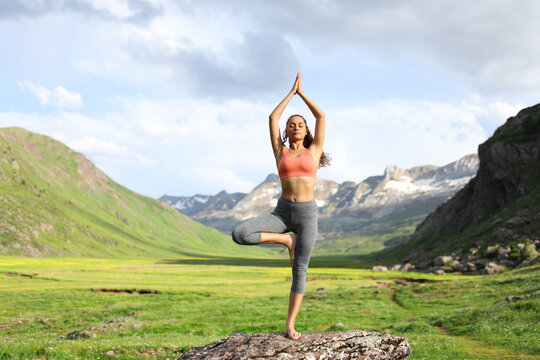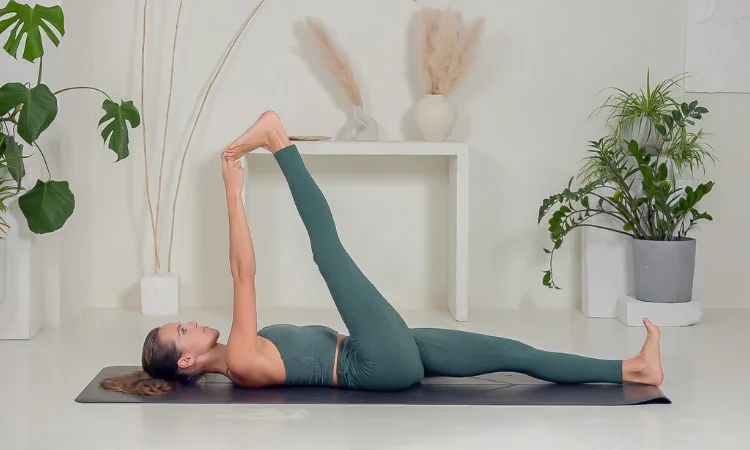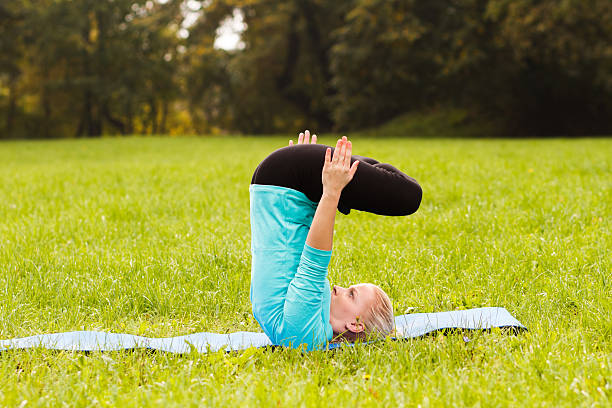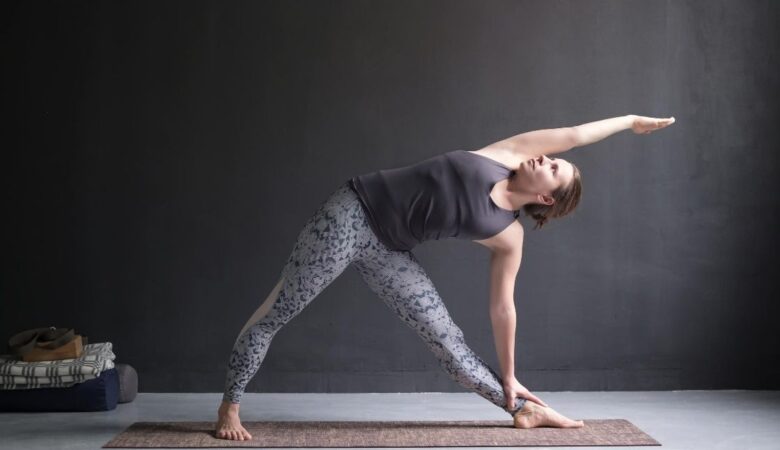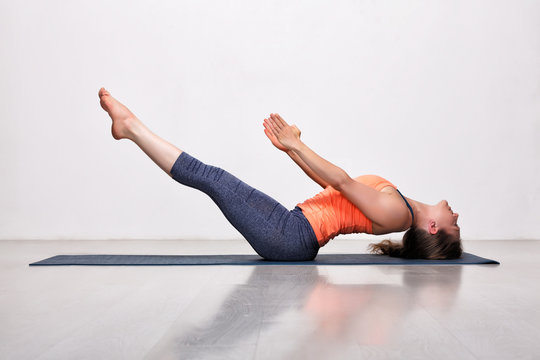Vrksasana, or Tree Pose, is a classic standing posture in yoga that emphasizes balance, focus, and grounding. The word Vrksasana comes from Sanskrit: “vrksa” means “tree” and “asana” means “pose.” Just like a tree stands tall and firm, this pose encourages you to find steadiness and calm within yourself.
Table of Contents
What is Vrksasana or Tree Pose?
Vrksasana, pronounced vrik-shah-suh-nuh, is a classic standing yoga posture that mimics the strong, rooted stance of a tree. In Sanskrit, “vrksa” means tree, and “asana” means pose or posture.
In this pose, the practitioner stands on one leg while placing the sole of the opposite foot on the inner thigh or calf (never the knee) of the standing leg. The hands are typically brought together in Namaste (prayer position) at the chest or stretched upward like tree branches reaching for the sky.
Key Features of Vrksasana:
- One-legged balance pose
- Enhances focus, grounding, and stability
- Involves physical stillness and mental calm
- Accessible for all levels with modifications
Symbolic Meaning:
Just like a tree stands tall, steady, and rooted yet flexible, Vrksasana encourages inner strength, balance, and calmness, both in the body and mind.
It is often one of the first balance postures taught in yoga and serves as a foundation for improving coordination, concentration, and poise.
How to Practice Vrksasana Step-by-Step Guide:
See below the step-by-step details on how to practice Vrksasana…
Start in Tadasana or Mountain Pose:
Stand straight with your feet together and arms at your sides.
Shift Your Weight:
Transfer your weight to your left foot.
Place the Right Foot:
Bend your right knee and place the sole of your right foot on the inner thigh, calf, or ankle of the left leg.
Find Your Balance:
Bring your hands into Namaste (prayer position) at your chest or raise them overhead with palms together.
Hold and Breathe:
Keep your gaze fixed on a point ahead (drishti) and breathe steadily for 30 seconds to 1 minute.
Release and Switch Sides:
Gently lower your arms and legs. Repeat on the other side.
Precautions:
- Avoid if you have: Severe vertigo or balance disorders.
- Knee or ankle injuries (unless modified with support).
-
Beginners may practice near a wall for support.
Tips for Beginners:
- If you can’t balance on one foot, start by placing your foot on your inner calf or ankle, not on the knee.
- Use a wall or chair to support balance in the early stages.
- Keep your gaze steady to help maintain focus and stability.
Benefits of Vrksasana or Tree Pose:
The benefits of Vrksasana are…
Improves Balance and Stability:
Vrksasana strengthens the legs, ankles, and core while enhancing your sense of physical balance and coordination.
Enhances Focus and Concentration:
Holding the pose requires mental stillness, which sharpens concentration and builds inner awareness.
Strengthens Muscles:
It tones and strengthens the thighs, calves, and abdominal muscles, supporting overall posture and stability.
Promotes Calmness and Grounding:
The pose encourages deep breathing and stillness, reducing stress, anxiety, and mental fatigue.
Therapeutic for Certain Conditions:
Helpful in managing flat feet, mild sciatica, and improving neuromuscular coordination.
Final Thoughts:
Vrksasana is a simple yet powerful posture that integrates body, mind, and breath. It reminds us to stay rooted like a tree and grow upward with grace and strength. Whether you’re looking to improve your balance or find inner calm, Tree Pose is an essential addition to any yoga practice.
FAQ:
Q. What is Vrksasana?
A: Vrksasana, or Tree Pose, is a standing yoga posture that promotes balance, stability, and concentration. It involves standing on one leg while placing the other foot on the inner thigh or calf and bringing the hands to a prayer position or overhead.
Q. Is Vrksasana suitable for beginners?
A. Yes, beginners can practice Vrksasana. If balancing is difficult, place your foot on the ankle or use a wall for support.
Q. Where should I place my foot in Tree Pose?
A. On the inner thigh, calf, or ankle of the standing leg.
Q. What if I keep losing balance?
A. That’s normal Focus your gaze on a fixed point in front of you (drishti) and engage your core. Practicing near a wall can help.
Q. Can Vrksasana help with anxiety or stress?
A. Yes, the stillness and focus required in Tree Pose help calm the mind and reduce stress or anxious thoughts.
Q. How long should I hold Tree Pose?
A. Hold for 30 seconds to 1 minute on each leg, depending on your comfort and ability.
Q. Are there any health conditions that restrict doing Vrksasana?
A. People with:
- Vertigo
- Severe knee or ankle injuries
- Balance disorders
should consult a doctor or use support while practicing.
Q. Can pregnant women do Tree Pose?
A. Yes, with proper support and balance awareness. A wall or chair can be used to prevent falls.
Q. What time of day is best for practicing Vrksasana?
A. Early morning or evening on an empty stomach is ideal. However, it can be done anytime as a quick mental and physical reset.

